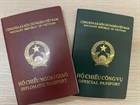On May 29, 2017, the National Assembly discussed the draft Law on Management and Use of State Assets (revised) with various opinions. According to the plan, on June 21, 2017, the National Assembly will vote to pass this law. A discussion with lawyer Nguyen Tien Lap from NHQuang & Associates Law Office and Arbitrator at the Vietnam International Arbitration Center (VIAC) revealed a different approach to the current issue of management and use of state assets.

Lawyer Nguyen Tien Lap
TBKTSG: A standout issue in the management and use of state assets (public assets) is the loss and waste. According to you, how should we view the root cause of this problem to find a fundamental solution?
- Lawyer Nguyen Tien Lap: It's fair to say our country is facing many prominent issues, among which "loss and waste" is just one. Looking at the root cause, the first is an ethical ailment and the second is a systemic one. In many other countries, as we know, anyone causing loss or waste of any asset, not to mention public assets, is first condemned by society on moral grounds. In our country, the waste and loss of state assets start from the leadership and management system.
Academically, this is referred to as a collective and majority consensus mechanism. The positive aspect of this mechanism is that it creates general support for all decisions, but the downside is the inability to hold anyone accountable, which over time leads to widespread irresponsibility. An ethical individual would preserve and save public assets because it respects the labor and effort of others. But if I do so while others waste and face no consequences, how long can I continue to preserve and save?
Hence, we must seriously acknowledge that if we continue with "loss and waste" like this, our country will never become prosperous. In my opinion, we must address both issues: continue to educate on ethics and change the system. If we only do one or do them non-synchronously, the aforementioned ailments and issues will never be resolved.
TBKTSG: From your perspective, how do you comment on the amendments shown in the current draft Law on Management and Use of State Assets (amended)?
- Lawyer Nguyen Tien Lap: Looking at the efforts of the National Assembly to amend and enact laws to address the issue of state asset loss and waste, we see significant frustration from the National Assembly delegates. However, the question is whether amending and enacting laws or using legislative measures can solve the problem?
Firstly, the ambition and expectation are too high with the expanded scope of the Law on Management and Use of State Assets 2008, from managing offices, equipment, and means of state agencies and organizations to all assets owned by the people, including infrastructure projects and resources, land. Personally, I doubt this new approach because it lacks clear distinctions between subjects, objectives, and management methods.
Furthermore, the previous law, with a narrower and clearer asset scope, was not effectively managed, and now expanding it means increasing complexity. How can we ensure its enforceability?
In principle, legal tools always have their limits, especially in our country, where the culture of respecting and adhering to the law has fundamentally broken down. Not to mention the reality that many years ago, when there was no specific law on the management and use of public assets, but only sub-law documents, the situation of loss and waste was not more serious than recently since the 2008 law was enacted. Moreover, technically, reading this draft law, we see the shadows of many other specialized laws currently being applied to different and particular asset management frameworks, such as the Land Law, Construction Law, Enterprise Law, Law on Management and Use of State Capital Invested in Production and Business, Public Investment Law... This might lead to an unavoidable outcome where this new law becomes a "frame law" and "framework law," as Chair of the National Assembly Nguyen Van An once warned, making it hard to put into practice.
Note that drafting and enacting a law may take only months, but organizing its implementation will take many years. Therefore, the approach of creating a new law with such a broad and complex scope is akin to tearing down an old house to rebuild, with the risk of causing even more loss and waste of state assets, which are already scarce.
TBKTSG: Compared to the past, the draft law includes new provisions allowing the mobilization of resources from state assets at public service providers to attract social resources for co-investment with the state in developing and exploiting public assets. This process poses new management challenges, especially given the negative issues arising during the current equitization of state-owned enterprises. How do you envisage the management of this process?
- Lawyer Nguyen Tien Lap: Essentially, the solutions in the draft law create a legal basis for co-management, co-ownership, or in other words, a mixed state in both ownership and management of public assets, especially tangible assets like office buildings and means serving state management activities and infrastructure projects. To some extent, this legitimizes the existing situation in some fields and localities or agencies and organizations.
However, if we follow this trend, state agencies need to anticipate significant challenges, both in terms of asset management for ensuring transparency and accountability to prevent loss and waste and potential legal risks. For specific types of public assets, once private ownership is involved, a different legal framework will apply, replacing administrative management mechanisms, and the level of disputes and complaints related to management, ownership, and benefits may increase. Therefore, considering the current weak public management capacity of our state apparatus, it's worth questioning whether we should pursue this direction in the new law.
TBKTSG: So, from a legal and institutional research perspective, what policy proposal do you have to improve the current management and use of state assets (public assets) to combat loss and waste? For example, how should the people, as owners, interact with the public servant apparatus (the state) in this aspect?
- Lawyer Nguyen Tien Lap: My perspective differs from the draft law's approach. Firstly, it is necessary to clearly distinguish between public assets (i.e., all national assets managed on behalf of the people by state agencies at different levels) and specific physical assets of state agencies and the political system funded by the state budget and owned by these agencies.
The first type of assets has been and is being managed according to specific laws, as mentioned earlier, because they are tied to particular protection mechanisms. The second type should be considered as part of the overall budget expenses for financing the state apparatus itself. These expenses should be capped at a certain percentage of GDP or total budget, and within that scope, state agencies and organizations should have full authority to decide on the use of the allocated resources to ensure their functions and duties.
With this approach, why can't state agencies and organizations rent their office premises instead of having to invest, build, own, and manage them? From the taxpayers' perspective, I believe the public is currently more concerned with how to reduce the disproportionately large budget expenditure for maintaining the state apparatus rather than how public assets are managed, focusing instead on expenditure for national development and public welfare for their benefit.
Source: Saigon Times
 Article table of contents
Article table of contents









